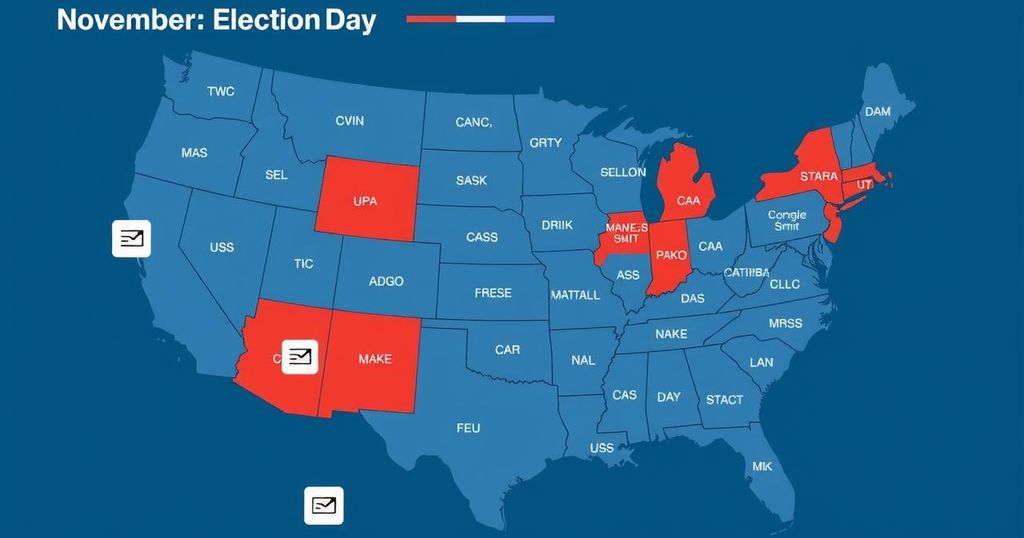The Reason Behind November Elections: A Historical Perspective on U.S. Election Day
The U.S. presidential elections are held on the first Tuesday after the first Monday in November, a practice initiated in the mid-1800s for consistency across states. The choice of November allowed farmers to vote without conflicting with planting or harvest seasons. Additionally, the day was selected based on travel logistics and social practices of the time, ensuring maximum voter participation without interference from religious or market schedules.
The United States conducts its presidential elections every four years on the first Tuesday after the first Monday in November. This specific timing is part of a long-standing tradition that dates back to the mid-1800s. While voting days in other countries, such as Sundays in Latin America or a spread over weeks in India, vary significantly, the U.S. has adopted this uniformity to simplify the electoral process. In the upcoming election, Americans will choose between Democratic President Joe Biden and former Republican President Donald Trump. The establishment of this fixed electoral date was influenced primarily by the needs of American farmers in the early years of the nation. Prior to 1845, elections could take place over a wide range of dates across different states, leading to potential inconsistencies and uncertainties in election outcomes. For example, in 1844, the presidential election spanned nearly a full month. Critics, concerned about the fairness and efficiency of such a scattered system, pointed out that results from earlier voting could skew perceptions and influence voters in later states. In response to these concerns, the U.S. Congress passed legislation in 1845 to create a standardized election date for both the president and the vice president, aligning all states to vote on the same day. Thus, the phrase was codified to hold elections on “the Tuesday next after the first Monday in the month of November.” The choice of November was particularly intentional. It was after the harvest season and before winter set in, ensuring that agricultural society could effectively participate without interference from the critical farming cycles. Many voters resided in rural areas, requiring considerable travel to polling places, which often could take an entire day. This necessitated sufficient time for travel, making Tuesday an optimal choice. Sunday was excluded due to church attendance, and Wednesday was not favorable as it was traditionally market day for farmers to conduct their trade activities. Similarly, Monday or Thursday were dismissed for travel concerns, leading to the unanimous decision to hold elections on Tuesday. Overall, this historical context illustrates the practical considerations that led to the establishment of Election Day in its current form. Acknowledging the significant influence of agriculture and rural life on the legislative decisions of the time offers insights into the motivations behind this electoral framework that remains in place today.
The choice of November as the election month in the United States can be traced back to the economic and social conditions of early American society. During the mid-19th century, the majority of the population was engaged in agriculture, making the timing of elections particularly important to avoid conflicts with harvests or planting seasons. Understanding the challenges faced by rural voters, such as travel distances to polling places and the need to accommodate their schedules, shaped the decision-making process. It illustrates the broader influence of agrarian culture on political practices in the fledgling nation.
In conclusion, the practice of holding U.S. presidential elections on the first Tuesday after the first Monday in November stems from historical agricultural practices and the need for a unified voting date. This tradition, formalized in 1845, reflects the socio-economic conditions of early America, ensuring that rural voters could participate without conflicting with their farming responsibilities. Understanding these historical foundations offers valuable insights into the electoral process that stands firm in contemporary politics.
Original Source: www.aljazeera.com




Post Comment